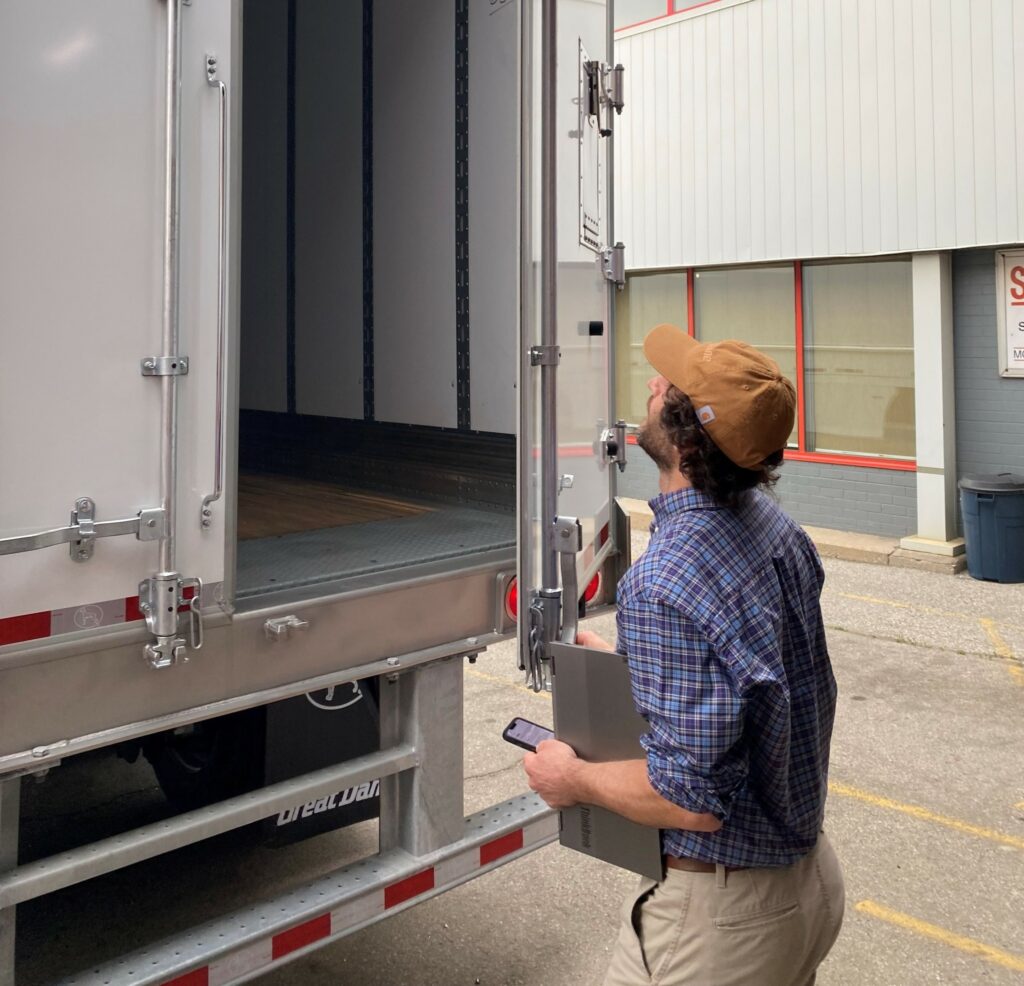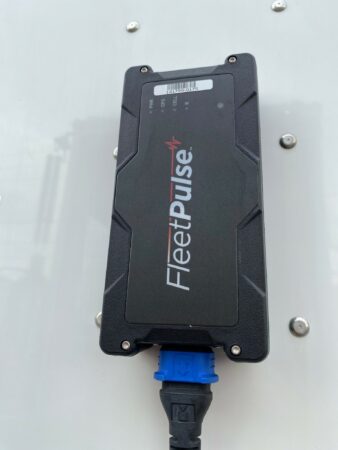5 ways to improve trailer utilization through telematics
If the last couple years of snarled supply chains, equipment shortages, and inflation have taught us anything, it’s that the trailer has always been an underappreciated asset. While fleets have been quick to adopt truck technologies that can improve productivity and uptime as well as visibility into location, the adoption of such technologies on trailers has, well, trailed.
That’s changing, according to George Cobham Jr., vice-president of sales and marketing with Glasvan Great Dane, which now spec’s basic telematics on all its stock van trailers and is finding customers are warming to trailer-mounted telematics once they learn what’s available.
“A lot of people have been making decision in the absence of data,” Cobham said. “But people are now interested in that data proposition to help them with their decision making.”
There are several ways fleets can improve trailer utilization by spec’ing trailers with telematics.

Track location
The most basic form of trailer telematics will give customers visibility into the location of their assets. While that may be table stakes for telematics providers, the precision they can deliver has greatly improved in recent years.
“Years ago, it was 10 to 15 meters,” said Rodrick Levesque, vice-president – engineering with Manac Trailers, noting GPS can now deliver much more precision so customers can even differentiate between units parked in a crowded yard.
Titanium Transportation uses GPS and geofencing to better monitor high-value loads while in transit. “It even has the ability to push forward an alert to a customer to tell them the load is coming into their yard,” chief operating officer Marilyn Daniel explained.
Get paid for detention time
Fleets that track trailers have the opportunity to enhance customer service with real-time location and arrival information, but can also keep shippers and receivers accountable when they detain trailers for extended times.
“If we dropped a trailer three days ago and the customer was supposed to unload it, we can go back proactively and say, ‘Please unload this trailer, it has been there three days — or it’s going to cost money to stay there,’” Daniel said.
Titanium CEO Ted Daniel said those conversations are less contentious when telematics data is there to support them.
“Computer-generated reports make the discussion less subjective,” he said of customer conversations related to demurrage charges.
It also provides proof of on-time delivery to discerning customers, Cobham added. “It gives [fleets] some protection when they hear their driver was late,” he said. “Now you have a time stamp. People really like geofencing the location they’re going to or shipping from.”
Onboard trailer sensors can also alert fleets to harsh loading and unloading incidents. Manac’s Levesque said the latest generation of GPS systems can detect unusual forces applied to the trailer, like when a forklift strikes an interior trailer wall. Such information can help fleets seek damages for shipper-incurred issues.
Promote uptime
Knowing where trailers are located is one way to keep them on the road and generating revenue. But technologies also have a role to play in maximizing the time they’re available to generate that revenue.
Tire inflation systems, for example, are a common trailer spec’ and telematics can help optimize the use of such technology.
Any inflation event that lasts more than 10 minutes is likely the sign of a serious puncture rather than temperature fluctuations, Cobham noted. The affected tire can be identified and repaired or replaced in the shop rather than at the side of the road.
When a trailer is tethered, Great Dane’s FleetPulse Pro also completes a virtual light inspection. Dispatch or maintenance teams can be notified if a light is out, and operations teams can ensure drivers are conducting thorough pre-trip inspections, reducing or eliminating failed inspections and fines at roadside.
“This will supplement the circle check and give dispatch peace of mind that the driver is doing their circle check,” Cobham said.
Tire inflation pressures, light status and ABS faults are the three main elements of a trailer health check that can be performed remotely through telematics.

Know your cargo status
The ability to know the status of any trailer load regardless of its location is another major contributor to improved trailer utilization.
How this is measured varies by system. Great Dane’s FleetPulse Pro relies on a height control valve sensor that detects weight to determine if a trailer is loaded or empty. Blackberry Radar, on the other hand, uses a time of flight sensor that measures the distance between itself and objects in front of it to deliver a detailed report on how much cargo space is being utilized. This is useful for LTL carriers that may be looking to add another pallet or two to a load.
Both approaches have their benefits.
“In order for the cargo sensors to work, the doors have to be closed,” Marilyn Daniel said of the Blackberry Radar units, acknowledging some shipper/receiver education is required to ensure trailer doors remain closed when not being loaded or unloaded.
Knowing when a trailer’s been unloaded allows a fleet to get the asset back into circulation for another load faster than waiting for verbal notification that may never come.
“Knowing if your trailer is loaded or unloaded is a great piece of simple information that has a huge bearing on fleet optimization,” Cobham said.
Improve efficiency
What company hasn’t had a driver couple to the wrong trailer and head off down the road? Onboard technologies can eliminate this age-old problem. Cobham said many fleets set up alerts for dispatch to be sent whenever a tractor couples to a trailer. Dispatch can then quickly verify the tractor is tethered to the appropriate trailer.
Titanium’s Marilyn Daniel said integrating with a fleet’s office software is one of the keys to maximize the benefits of onboard technologies.
“The hardware is easy to buy,” she said. “It’s the integration and optimization of using it that takes time and skill.”
Geofencing is another way fleets can enhance utilization and prevent mismatches, with alerts set up for whenever a trailer leaves a given yard. “There are multiple ways to figure out, did someone take the wrong trailer?” Cobham notes.
Levesque said improvements in telematics are giving fleets new ways to optimize efficiency, and he’s excited about the possibilities that lay ahead, including the chance to adjust trailer tire pressures on the fly.
“The coming generation is more predictive,” he said of emerging telematics technologies. “You’ll also be able to deflate [tire pressures] if needed. If you are doing the Rockies to California, it will change tire pressures to have the optimized tread for the tire on the road based on temperature and altitude. You may have 80 psi in the mountains and 100 psi in the summer, and 85 psi in Edmonton at -40 C.”

Have your say
This is a moderated forum. Comments will no longer be published unless they are accompanied by a first and last name and a verifiable email address. (Today's Trucking will not publish or share the email address.) Profane language and content deemed to be libelous, racist, or threatening in nature will not be published under any circumstances.